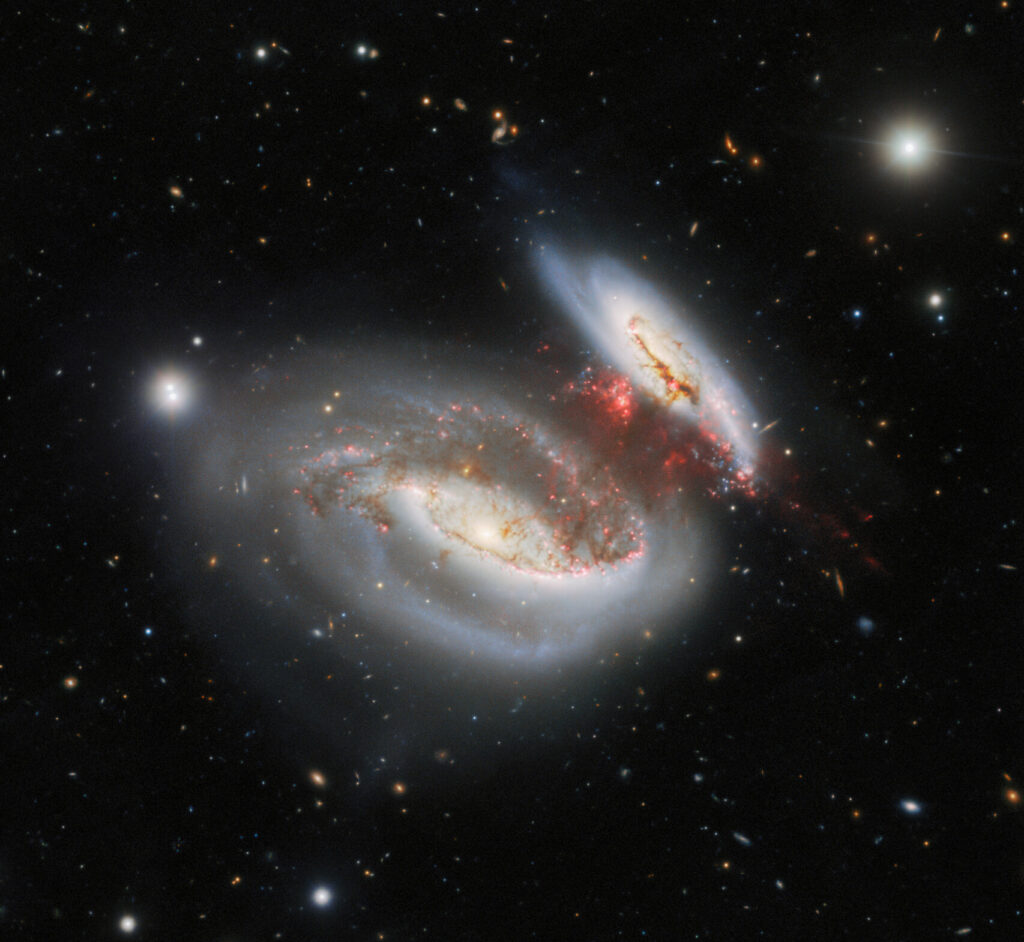Astronomers working on the Gemini North telescope have published a spectacular new image of deep space. It shows a pair of colliding galaxies UGC 12914 and UGC 12915.

UGC 12914 and UGC 12915 are located 180 million light-years away from the Milky Way in the direction of the constellation Pegasus. They are also informally called “Taffy” Galaxies. UGC 12914 and UGC 12915 owe their unusual appearance to a collision. They participated in about 25 million years ago. The cosmic accident not only distorted the original shapes of the galaxies, but also led to the fact that they acquired a bridge consisting of gas torn out of them.
Galaxy collisions can occur in many different scenarios. They often involve a larger galaxy and its smaller companion. For example, a satellite galaxy can attract one of the spiral arms of its neighbor. Or vice versa, a larger galaxy can distort the structure of its companion. A collision can also lead to a complete merger if none of its participants has enough momentum to continue moving.
All these scenarios are united by the fact that stellar material from both galaxies is mixed through gradual unification and redistribution of gas. The gas is compacted, which provokes an outbreak of star formation.
However, a head-on collision is more like pouring liquid from two different cups into a common bowl. UGC 12914 and UGC 12915 collided exactly according to this scenario. When the galaxies dispersed, streams of high-speed gas stretched out of them, forming a bridge photographed by Gemini North. Its turbulence prevents the gas from compacting, which is necessary for the formation of new stars to begin.
Earlier we talked about how Hubble photographed a galaxy with an active core.
According to https://noirlab.edu
Follow us on Twitter to get the most interesting space news in time
https://twitter.com/ust_magazine

